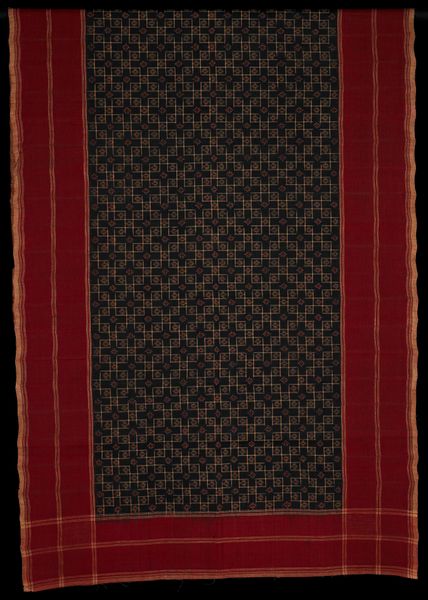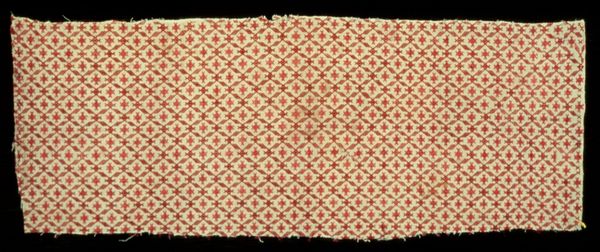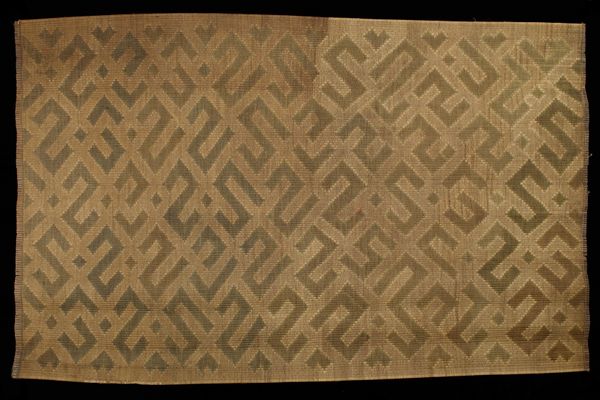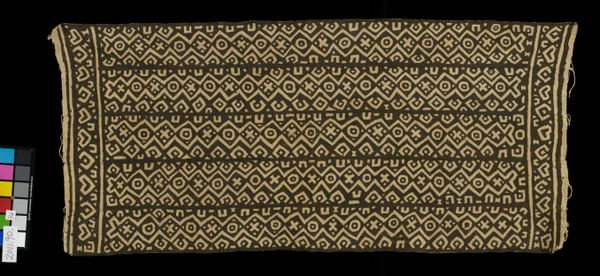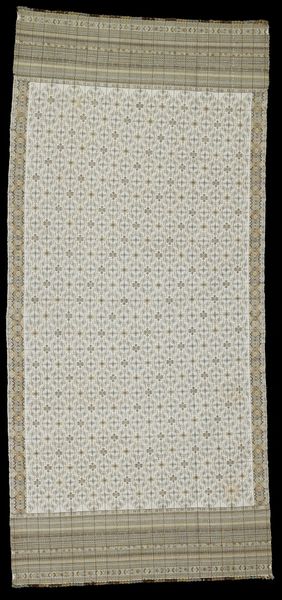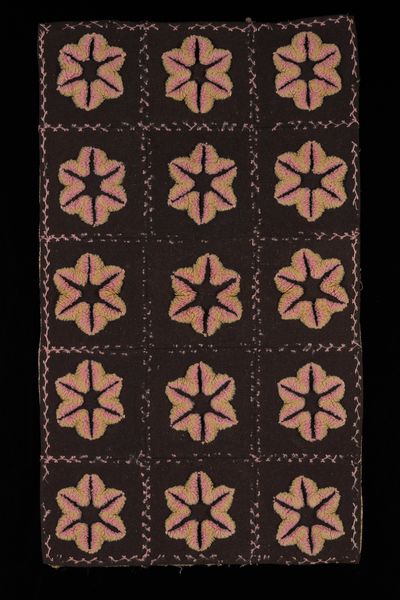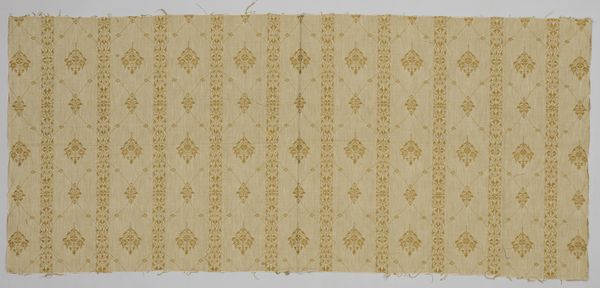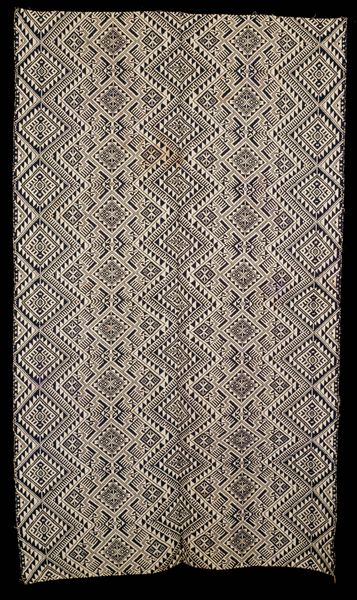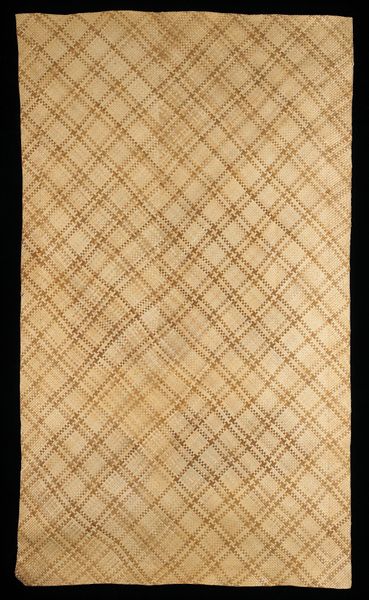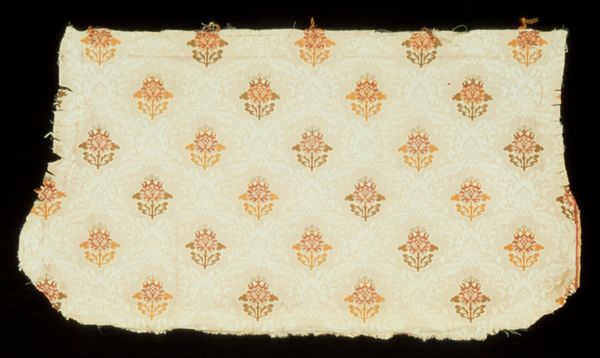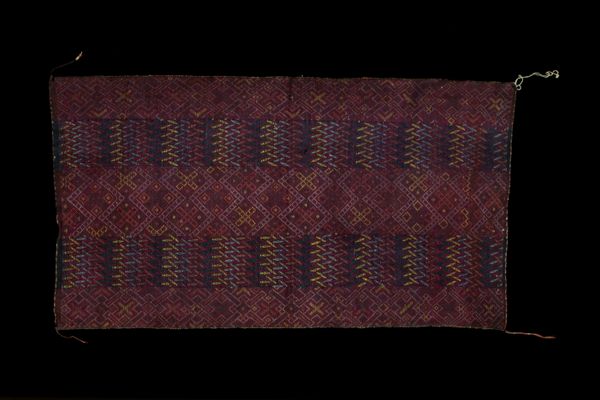
silk, textile, cotton
#
silk
#
pattern
#
asian-art
#
textile
#
geometric pattern
#
geometric
#
cotton
Dimensions: 94 3/4 x 53 1/4 in. (240.67 x 135.26 cm)
Copyright: Public Domain
Editor: Here we have an object entitled “Wedding veil (Chand bagh),” made sometime between the late 19th and early 20th centuries. It’s fashioned from cotton and silk. I'm struck by the geometric design – the stark lines forming these diamond shapes against the muted background. What stands out to you, and how do you interpret this work? Curator: Well, given that this is a wedding veil, we have to consider the complex role textiles played, especially for women in that era. Its geometric precision speaks volumes. What does a perfect, repeating pattern symbolize in the context of marriage, particularly for women? Editor: Perhaps order? Or maybe even a constrained destiny? Curator: Precisely! And consider this: the craft of creating such intricate work was often passed down through generations of women, representing a crucial aspect of their cultural expression. Do you think the veil's beauty is in conflict with its potential message of confinement? Editor: That's a great question. It does seem contradictory. There’s beauty and artistry here, but also, possibly, the weight of expectations. The labor itself—creating something so elaborate—must have been significant. It makes you think about the lives of the women who made and wore this. Curator: Exactly. These textiles were more than just beautiful objects. They acted as silent witnesses to social norms, artistic expression, and the lived experiences of women within specific cultural frameworks. Thinking about the labour, the transmission of knowledge, and the social statement made by its display opens up fascinating conversations about gender and power dynamics within artistic and social spaces. What will you take away from your looking experience today? Editor: I'll definitely be thinking more critically about the stories these objects hold – not just their aesthetic qualities but the layers of history and social meaning woven into their very fibers. Thank you.
Comments
minneapolisinstituteofart almost 2 years ago
⋮
The Punjab region of India and Pakistan once was famous for darning stitch embroidery called phulkari, or flower work. Some designs were distinctly floral; others severely geometric. When the embroidery densely covered the cloth's surface, the "flowers" were said to form a bagh, or garden. And when shimmering white silk stitches floated on a dark background as in this veil, the flower garden became a heavenly "moon garden" (chand bagh). All of the Punjab's major groups - Hindus, Sikhs, and Muslims - used phulkari for wedding textiles, worn by bride, groom, and guests. Women of the household typically spent years preparing the embroideries, plotting out designs by counting threads in the ground cloth. Stitching was done from the reverse side so that the embroiderer created the design without actually seeing it.
Join the conversation
Join millions of artists and users on Artera today and experience the ultimate creative platform.
